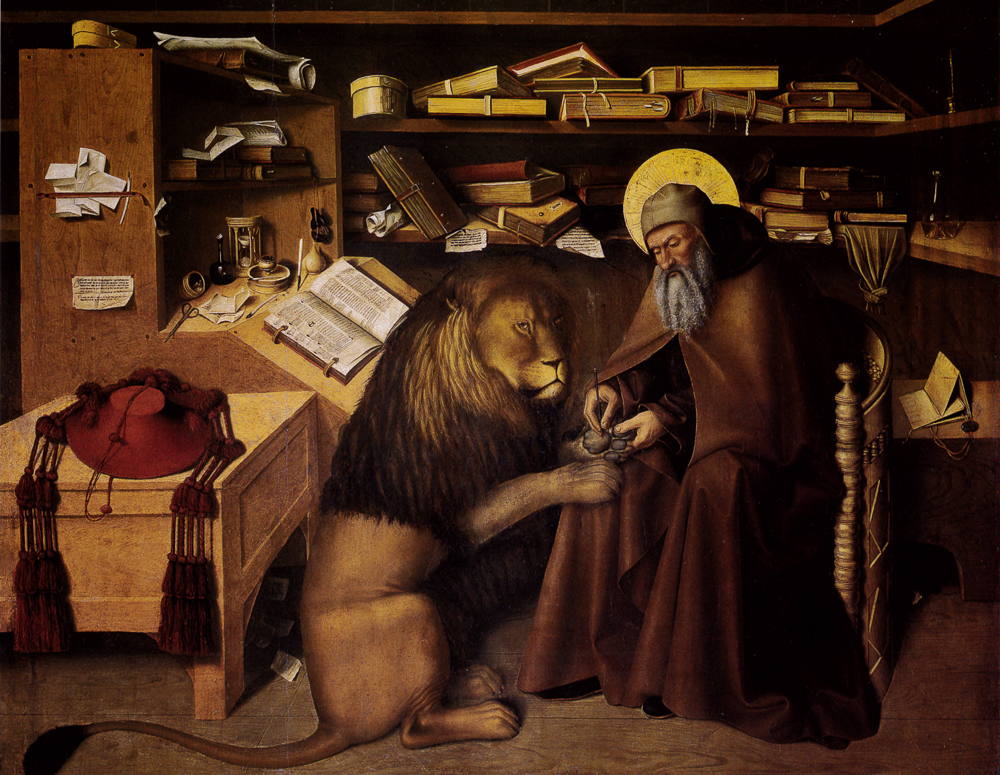The original research hypothesis of this Ph.D. project was the assumption that there is a connection between the 15th-century representations of landscape in maps and in the background of panel paintings. During the research process the focus was adjusted to the appropriation of early Netherlandish models in panel painting.
Research

Colantonio, Hieronymus im Gehäus, Neapel, Museo di Capodimonte | Source: Lucco, Mauro: Antonello da Messina, Mailand: 24 Ore Cultura, 2011
The surprisingly early production of exact physiographical maps in the kingdom of Naples is contemporaneous to the local painters’ appropriation of early Netherlandish models, vaunted in the coeval literature on art especially for their rendering of landscape. This connection, though plausible, turned out difficult to prove with historical accuracy. Therefore, the research question had to be adjusted. Additionally, the scope of the research project was extended to also include Aragonese Spain, at that time closely related and temporarily politically united to the Kingdom of Naples under Alfonso V. of Aragon.
The concept of translation served as an analytical tool to analyze this cultural transfer in a close reading for exemplary cases, such as the altarpieces of the Neapolitan painter Colantonio or the Valencian painter Luis Dalmau. As translations they adjusted their models to the local requirements and traditions, while at the same time contributing to the process of identification of “Netherlandish painting” which was subsequently – most prominently by Giorgio Vasari in the second half of the 16th century – defined as the “other” in opposition to “Italian painting”.
Results
Proto-national conceptions of Italy were developed most prominently and lastingly in Flavio Biondo’s “Italia illustrata” (1453, printed in 1474) through an appropriation and reconstruction of the antique geography and topography which serves as an organizational scheme for historical knowledge, such as the biographies of famous men linked to their native towns or places of work. Bartolomeo Fazio’s “De viris illustribus” (1456) on the other hand, likewise commissioned by Alfonso of Aragon, is a collection of contemporary famous men without geographical boundaries. In the chapter on painters, both Italian and Netherlandish painters are singled out to be worthy of comparison with antique models, contrary to later stylistic classifications that contrast the late Gothic and the early Renaissance. Parallel to fostering the construction of identity-related spatial units such as “Italy”, King Alfonso of Aragon established Naples as a major player in an international courtly network that favored Burgundian luxury objects and early Netherlandish painting in particular.
This Ph.D. thesis has been written within the program “Material Cultures and Object Studies” (MaCOS) of the Berlin Graduate School of Ancient Studies (BerGSAS) and was successfully completed in 2017.
